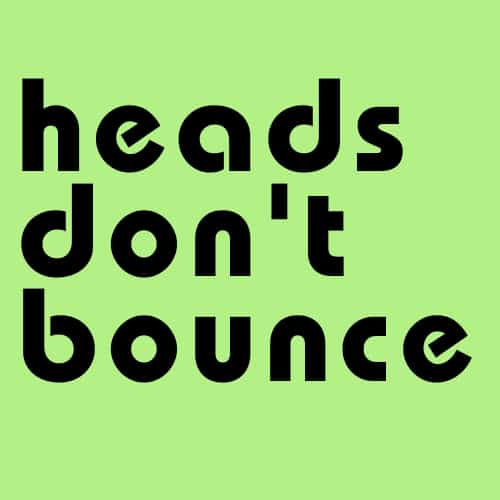How Should a Ski Helmet Fit?
Whether you’re going to a ski resort or touring the back-country, you should be wearing a ski helmet. A helmet will protect your head and brain from injury in case of a crash or accident. But wearing a ski helmet is not enough.
To make sure you get the optimal head protection from your lid, you must find a helmet that actually fits your head.
So, how should a ski helmet fit? Starting with the correct size helmet is your key to achieving the perfect fit in a ski helmet.
- To find the right size, you need to measure your head. Then match your head circumference with the ski helmet size chart. (See video below).
- Ensure that the helmet doesn’t cause pain on any pressure points.
- It should not give you a headache or leaves red marks on your skin.
- Make sure it doesn’t wobble around and is firm, snug and comfortable.
- With the helmet level on your head, adjust the rear dial to customize the fit.
- Adjust the chin strap to be tight and firm, but room to fit a finger or two between the strap and your chin.
Page Content
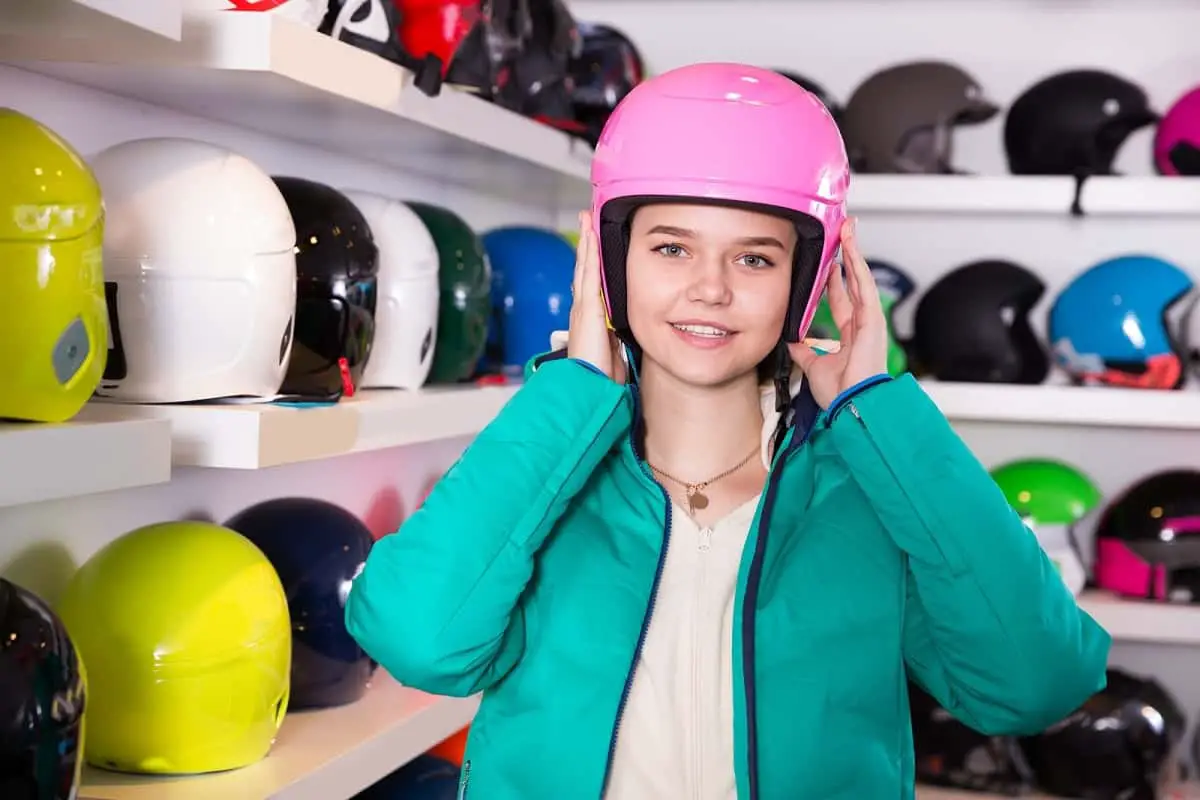
Disclosure: As an Avantlink and Amazon Associate, we earn from qualifying purchases. Disclosure Statement.

How Should a Ski Helmet Fit?
The purpose of a ski helmet is to provide head and brain protection against injury. But to achieve that the helmet must be the right fit for your head. Whenever you put your ski helmet on, make sure it doesn’t wobble around and has a firm, snug fit around your head.
Your ski helmet should also be comfortable enough that it doesn’t cause pain on any pressure points. Your ski helmet should not give you a headache or leaves red marks on your skin, at all. If it does, then it’s too tight or you have the wrong size and shape.
SUGGESTED: Ski & Snowboard Helmets With Bluetooth
Follow the tips below to achieve a firm but comfortable fitted ski helmet. Please keep in mind that starting with the right helmet size is the key to a safe, well-fitting helmet. Finally, complete the ‘Helmet Fit Check’ down below to check your fit.
How to Measure for a Ski Helmet
Finding a proper fitting ski helmet can be challenging, especially if it’s your first time buying a helmet. Or, even if you’re renting one at your ski resort. Below are simple tips to consider when you measure for a ski helmet.
Measure your head circumference
Most helmets come in small, medium, large, or extra-large sizes. These sizes will often have a corresponding measurement in centimeters and/or inches.
To find which size you need, you can start by using a measuring tape to find your head circumference. You should wrap the measuring tape around your head. Make sure that it is about an inch above your ears and eyebrows. Take note of the measurement where the end of tape meets itself and then compare it to the ski helmet’s size chart.
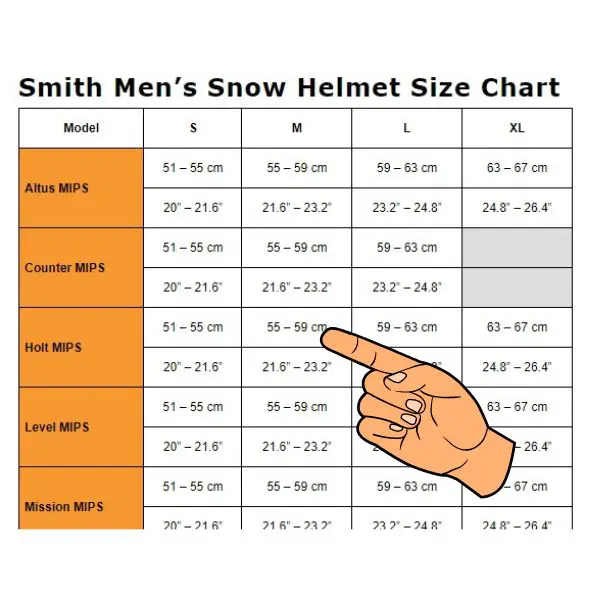
RELATED: Ski & Snowboard Helmets For Big Heads
Consider your head shape
Some helmet manufacturers offer different helmets designs to suit specific head shapes. An intermediate oval helmet is for a head shape that is longer from the front to the back than from side to side. Or, if your head is more of a round shape, then you should try out the round oval helmet.
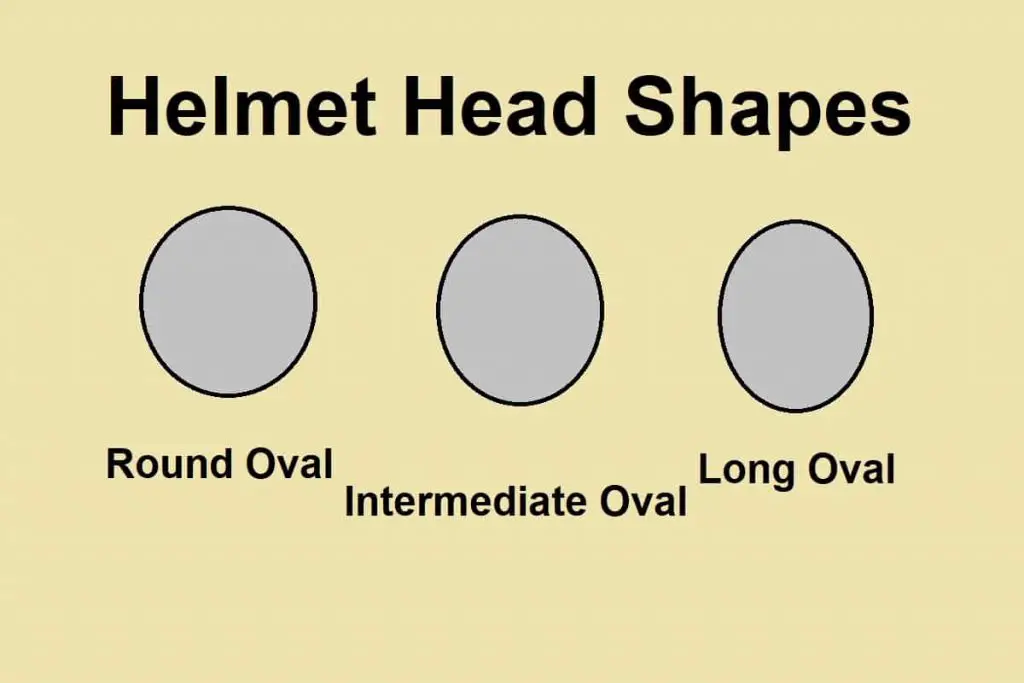
To get the actual shape of your head, you can use a mirror and place it above your head. You can also ask a friend to take a look on the top of your head while standing from an elevated surface.
Keep in mind though that not all helmet brands cater to different head shapes. But, not to worry as the helmet padding will make it comfortable for most head shapes.
Try on the helmet
Once you know your head size and shape, you can narrow down the list of your ski helmet options. Try to wear each one on your list so you can determine which one is the most comfortable. Some skiers like to wear a beanie underneath their helmets. If that sounds like you, be sure to wear the beanie when trying on different helmets so you get the right size.
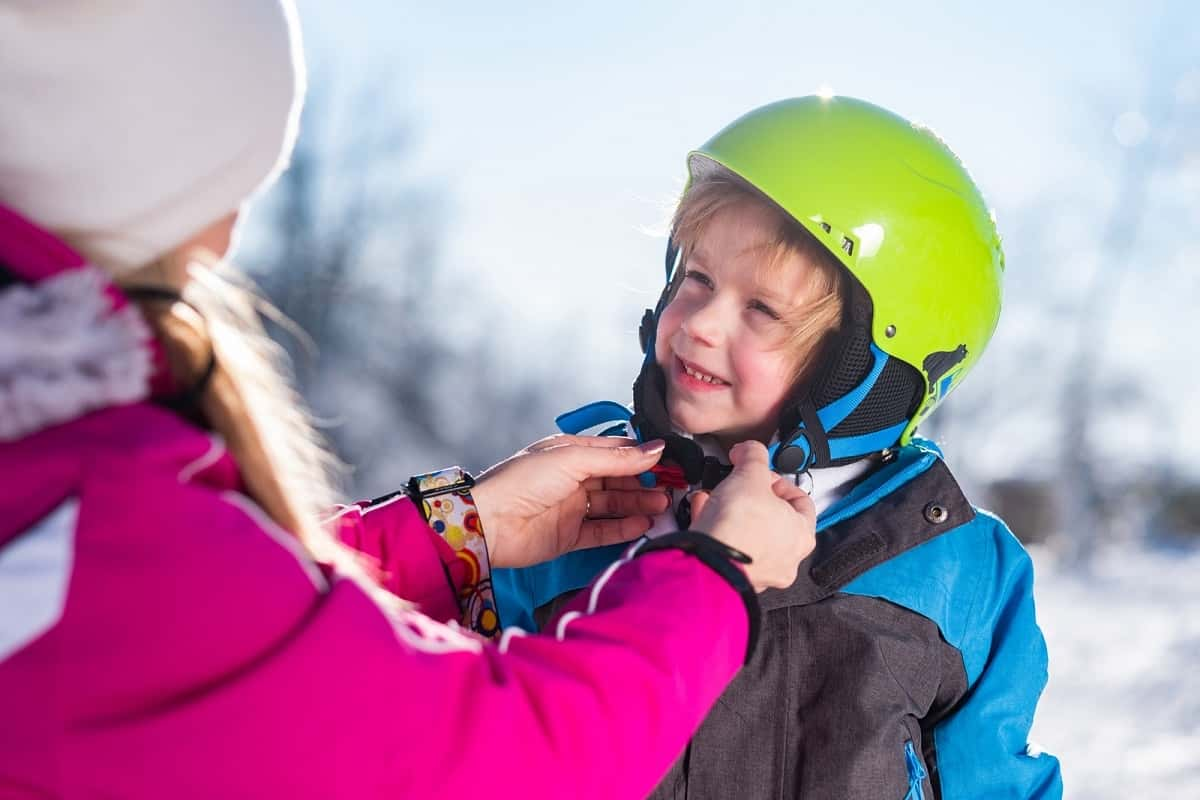
Check the position of the helmet
When wearing a helmet, the front rim should be at a two-finger height above your eyebrows. Make sure that it is a snug fit as it sits over your head. It shouldn’t move or slide when you move your head.
Check the space between your helmet and goggles
Some ski helmets come with a built-in flip up visor. But if you decide on wearing ski goggles, you should wear your goggles when trying on the helmet. There shouldn’t be a gap between the goggles and helmet. Also, make sure the front rim doesn’t press down on the ski goggles or block your view.
SUGGESTED: Best Ski Helmets With Visors
Many ski helmet brands will have matching ski goggles that will align together for a perfect fit. This is important to stop your goggles from fogging up while skiing.
Secure the Helmet
A good ski helmet often comes with a fit adjusting system that allows you to customize the fit to suit your head. The fit adjusting system is usually an ergo-dial at the back of the helmet. You can turn the dial using one hand even while wearing gloves.
Tighten the Chin Straps
The chin straps are important as they secure the ski helmet onto your head. They prevent it from coming loose as you go down the slopes or flying off upon crash or collision.
After buckling the chin straps, make sure they’re tight and firm. Yet, you should be able to slip a finger or two between the strap and your chin. In other words, tight and firm, but not too tight!
Also, pay attention to the side straps – they should be under your earlobes, forming a Y-shape. If the straps have adjustable sliders, lock the sliders to make sure the side straps don’t loosen.
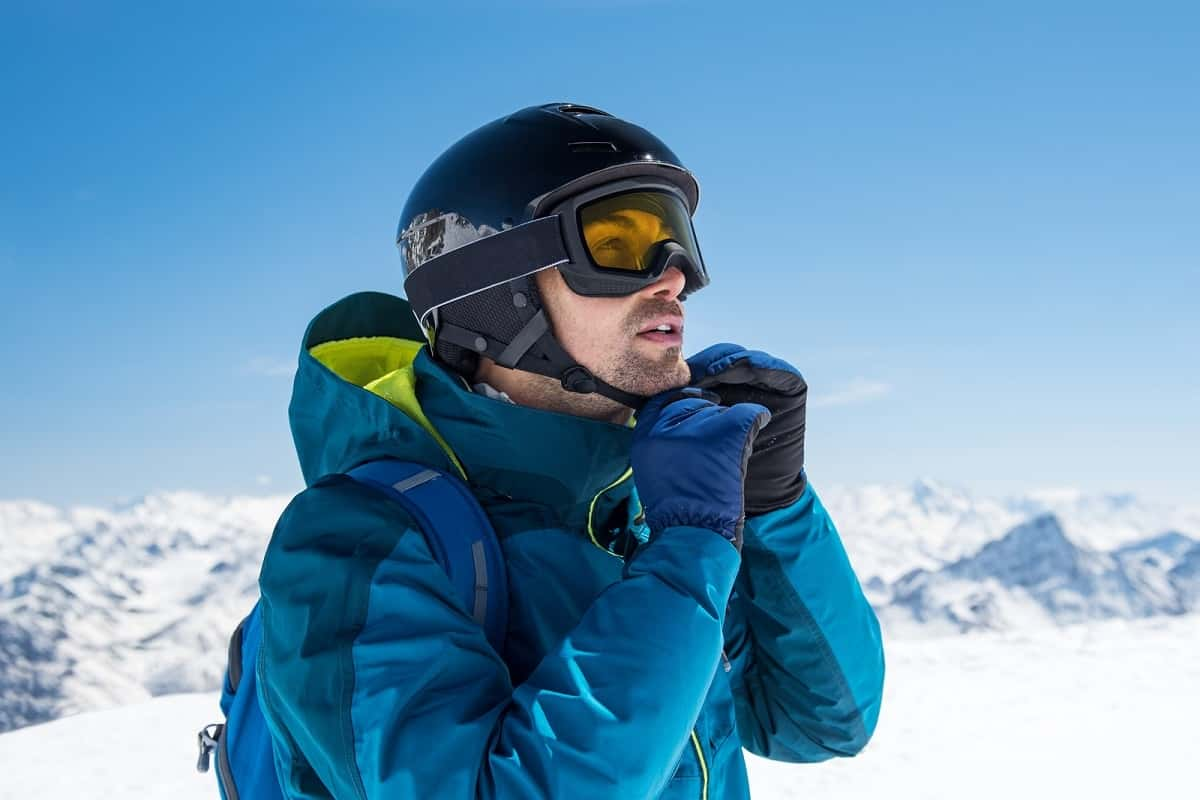
Helmet Fit Check
Now that you have selected the ideal ski helmet, you’re ready to go. But before hitting the slopes, it is always a good idea to do a helmet fit check first. Below are some tips to remember:
- Open your mouth wide as if you’re yawning. If the straps pull the helmet down on your head, then it fits right. Otherwise, check and re-fasten the straps.
- Tip or rock your head sideways, forward, and backward. If the helmet rolls, then it needs a bit more tightening. Unbuckle the straps, adjust the fit, and then re-strap the helmet, then check again.
- If your helmet has a dial adjuster at the rear, check for a snug fit. Re-tighten, if needed.
- With your palm, try pushing your helmet up and backward. If it slides, you need to tighten your helmet.
- If your helmet has ear pads, they should press against your ears. The ear pads shouldn’t shift when you move your head. If they do, adjust the tightness of the chin strap.
How To Choose a Ski Helmet?
Features to Look for When Purchasing a Ski Helmet
| Feature | Description |
|---|---|
| Fit | Ensure the helmet fits snugly but comfortably on your head. |
| Protection | Look for helmets with adequate impact protection, such as multi-impact foam or MIPS technology. |
| Ventilation | Consider helmets with adjustable ventilation to regulate temperature and prevent overheating. |
| Weight | Choose a lightweight helmet for enhanced comfort during long days on the slopes. |
| Visor | Some helmets come with built-in visors or compatible goggles for added eye protection. |
| Audio Compatibility | Look for helmets with audio compatibility to easily integrate headphones or communication devices. |
| Adjustability | Consider helmets with adjustable sizing systems for a customizable fit. |
| Style | Choose a helmet with a style and color that matches your preferences and personality. |
When choosing a ski helmet, you will find many brands, all offering a variety of designs and colors. You should try to find a helmet style that suits your personality. But, it’s important to be mindful of the following factors when making your final choice.
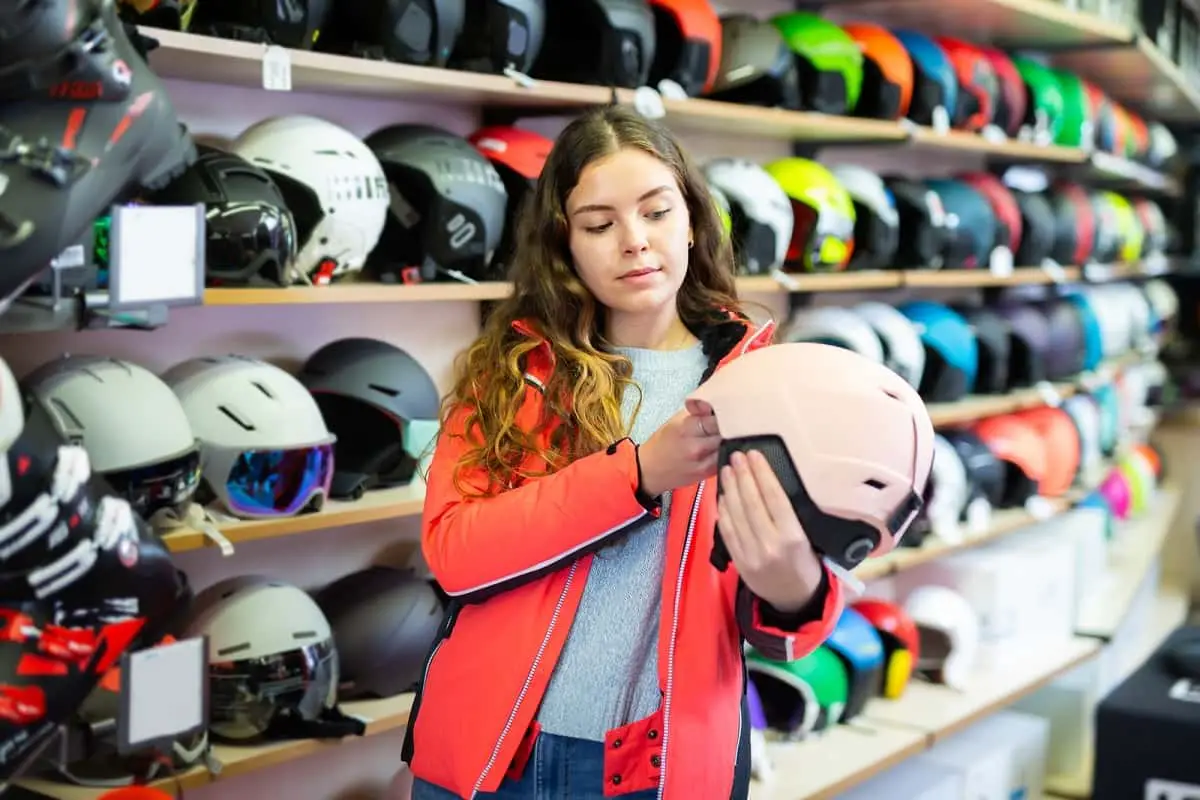
Certification
No helmet can guarantee that it can keep your head completely safe against injury. But, you’d still want to choose a helmet that is safety certified to the applicable standard. Certified ski helmets have a label inside to show that they’re either ASTM F2040 or CE EN1077 certified.
ASTM F2040 is the standard for ski helmets in the United States. The standard for Europe and several other countries is CE EN1077. Some ski helmets have both safety certifications.
This content was originally published on headsdontbounce.com. If it appears on another website, it is a violation of the copyright owned by headsdontbounce.com.
Multi-directional Impact Protection System (MIPS)
A MIPS-equipped ski helmet can protect the head against rotational or angled impact. It is a thin lining called a slip plane that allows a slight movement of the inner helmet upon impact. This slight movement within the helmet, helps the impact forces to dissipate. Thus lessening the chance of concussions or traumatic brain injuries.
RELATED: Ski Helmets With MIPS
Beanie-compatible
Most people find that the comfort padding inside a ski helmet is enough to stay warm. Yet, some people choose to wear a beanie under their helmet. And others go for a balaclava during colder weather conditions.
If you feel the need to wear a beanie underneath your ski helmet, you can always wear one. But, as mentioned earlier, be sure to wear your beanie when choosing your ski helmet. If you don’t wear the beanie during helmet fitting, you many find your helmet is too tight.
Here are two ski helmets from Smith Optics that are ‘beanie compatible’:
I hope we have answered the question of ‘how should a ski helmet fit’ to your satisfaction. If you enjoyed this article, take a look at the related reads below for some more interesting reads!
Related Reads:
